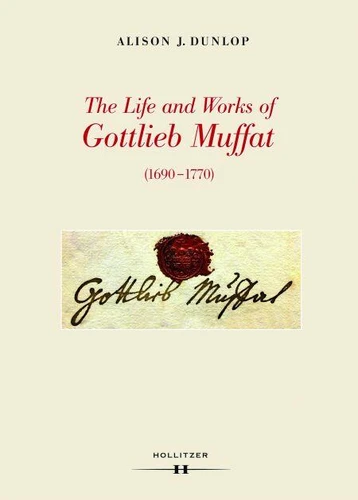The Life and Works of Gottlieb Muffat (1690 - 1770). Part I: A Documentary Biography. Part II: Catalogue of Works and Sources
Par :Formats :
Disponible dans votre compte client Decitre ou Furet du Nord dès validation de votre commande. Le format ePub est :
- Compatible avec une lecture sur My Vivlio (smartphone, tablette, ordinateur)
- Compatible avec une lecture sur liseuses Vivlio
- Pour les liseuses autres que Vivlio, vous devez utiliser le logiciel Adobe Digital Edition. Non compatible avec la lecture sur les liseuses Kindle, Remarkable et Sony
 , qui est-ce ?
, qui est-ce ?Notre partenaire de plateforme de lecture numérique où vous retrouverez l'ensemble de vos ebooks gratuitement
Pour en savoir plus sur nos ebooks, consultez notre aide en ligne ici
- Nombre de pages600
- FormatePub
- ISBN978-3-99012-086-6
- EAN9783990120866
- Date de parution30/09/2013
- Protection num.Digital Watermarking
- Taille22 Mo
- Infos supplémentairesepub
- ÉditeurHollitzer Wissenschaftsverlag
Résumé
Gottlieb Muffat (1690-1770) has been heralded as one of the first composers of keyboard music to display 'distinctly Austrian traits'. In light of both the extent and quality of his ouvre, he was undoubtedly the single most important composer of keyboard music in Vienna in the first half of the eighteenth century. A prodigious child, he performed for the Emperor when he was around ten years old and his formative years were shaped by two of the most renowned composers of the period: his father Georg and Johann Joseph Fux.
Muffat served as organist at the Viennese imperial court for over half a century and was responsible for teaching several members of the imperial family. This book explores both his career and quotidian existence and presents much hitherto unknown information about other members of this musical family. A thematic catalogue, which includes descriptions of all known manuscript sources of his music, comprises the second part of this study and serves to highlight the significance of his output and the reception and transmission of his work.
Muffat served as organist at the Viennese imperial court for over half a century and was responsible for teaching several members of the imperial family. This book explores both his career and quotidian existence and presents much hitherto unknown information about other members of this musical family. A thematic catalogue, which includes descriptions of all known manuscript sources of his music, comprises the second part of this study and serves to highlight the significance of his output and the reception and transmission of his work.
Gottlieb Muffat (1690-1770) has been heralded as one of the first composers of keyboard music to display 'distinctly Austrian traits'. In light of both the extent and quality of his ouvre, he was undoubtedly the single most important composer of keyboard music in Vienna in the first half of the eighteenth century. A prodigious child, he performed for the Emperor when he was around ten years old and his formative years were shaped by two of the most renowned composers of the period: his father Georg and Johann Joseph Fux.
Muffat served as organist at the Viennese imperial court for over half a century and was responsible for teaching several members of the imperial family. This book explores both his career and quotidian existence and presents much hitherto unknown information about other members of this musical family. A thematic catalogue, which includes descriptions of all known manuscript sources of his music, comprises the second part of this study and serves to highlight the significance of his output and the reception and transmission of his work.
Muffat served as organist at the Viennese imperial court for over half a century and was responsible for teaching several members of the imperial family. This book explores both his career and quotidian existence and presents much hitherto unknown information about other members of this musical family. A thematic catalogue, which includes descriptions of all known manuscript sources of his music, comprises the second part of this study and serves to highlight the significance of his output and the reception and transmission of his work.



